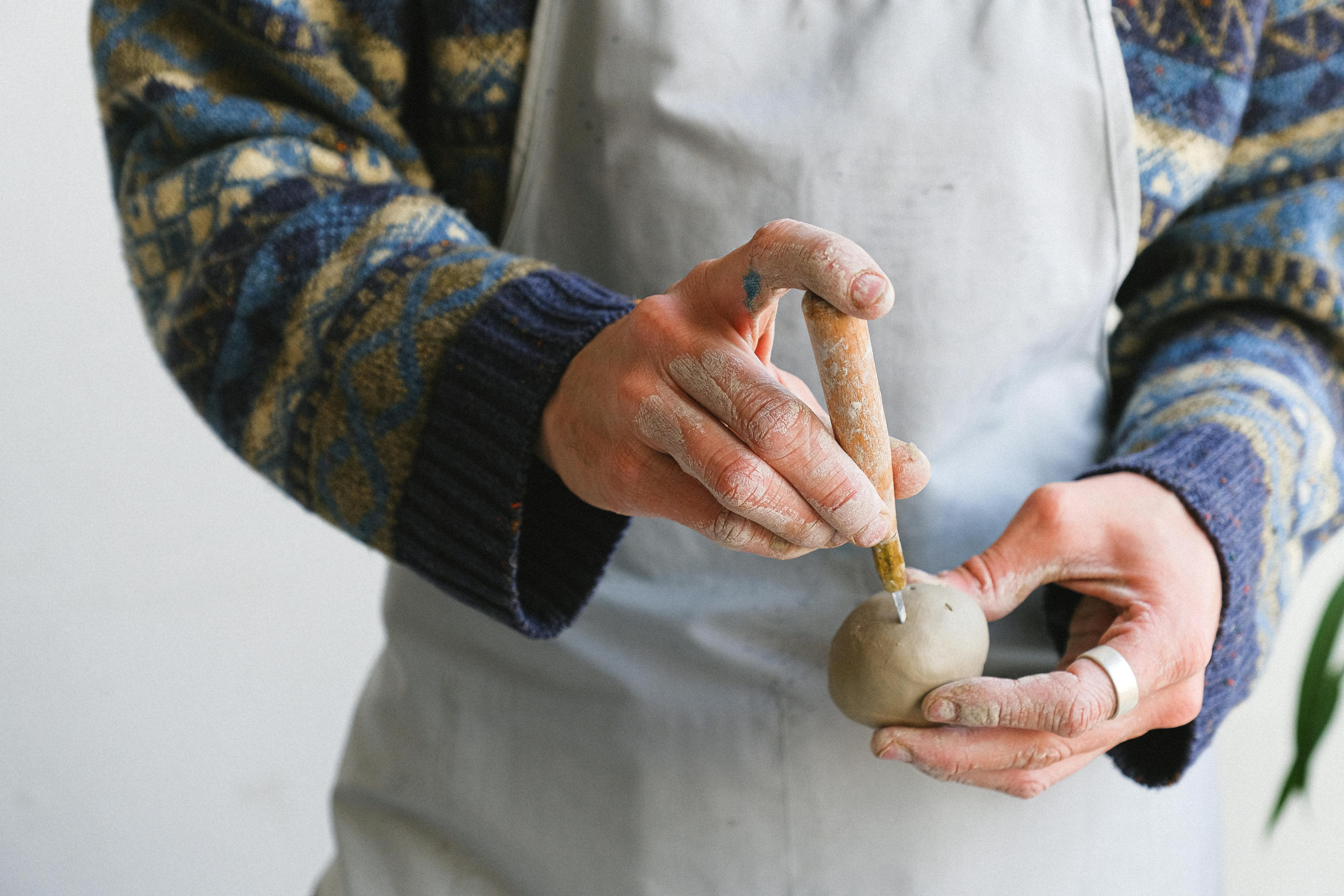A ball valve is a type of valve used to control the flow of liquids and gases. It is commonly used in industrial, commercial, and residential applications. The ball valve consists of a hollow cylindrical body with an opening at one end and a spherical ball inside. When the valve is open, the opening in the body allows material to pass through; when it is closed, the spherical ball blocks off the opening and prevents further flow. This basic design makes ball valves highly efficient and reliable. In this article, we will discuss how a ball valve works and its various features.A ball valve is a type of valve that uses a spherical closure unit to control the flow of a liquid or gas. It has a handle or lever that is used to open, close, and adjust the flow rate. The ball inside the valve has a hole in it that lines up with the pipe when it is in the open position. When rotated, the hole is turned away from the pipe, stopping the flow. Ball valves are reliable and easy to maintain, making them an ideal choice for both commercial and residential applications.
Working Mechanism of a Ball Valve
A ball valve is a form of quarter-turn valve which uses a hollow, perforated and pivoting ball to control flow through it. It is open when the ball’s hole is in line with the flow and closed when it is pivoted 90-degrees by the valve handle. The handle lies flat in alignment with the flow when open, and is perpendicular to it when closed, making for easy visual confirmation of the valve’s status.
Ball valves are durable, performing well after many cycles, and reliable, closing securely even after long periods of disuse. In most cases they require little attention. This makes them an excellent choice for shutoff and control applications, where they are often preferred to gates or globe valves because their minimal friction loss results in significantly lower energy consumption.
The main components that make up a ball valve are: the body; the ball; the stem; seats; packing; handles and actuators. The body is usually made from cast iron or steel and houses all other components inside it. The ball itself has a hole drilled through its center that allows it to pivot within the body between an open and closed position. The stem runs inside the body from top to bottom and connects to the actuator or handle which allows for manual operation of the valve. The seats are located inside the body on either side of the ball which create a seal around it when tight against its surface. The packing helps keep any water leakage from occurring around these seals while also ensuring smooth operation of all moving parts.
When operated correctly, a ball valve opens or closes in one motion as soon as pressure on either side of it is equalized due to its design that only requires a quarter turn (90 degree) rotation to move from one setting to another (open/close). This makes them easy to control compared to other valves such as gate valves which require several turns before they can be opened or closed completely. Additionally, because there are no threads involved in their operation, ball valves require less maintenance than other types of valves due to their ability to resist sticking over time due to corrosion or debris buildup on its sealing surfaces.
Advantages of a Ball Valve
Ball valves are a type of valve used in plumbing and other industrial applications. Ball valves are designed to provide reliable, leak-proof sealing with minimal effort. They are simple to operate, and require minimal maintenance. Here are some of the advantages of ball valves:
Durability. Ball valves are made from durable materials such as stainless steel or brass, which makes them highly resistant to rust and corrosion. This makes them ideal for use in corrosive environments, such as swimming pools or chemical plants. The construction also makes them resistant to wear and tear, so they can last for many years with proper maintenance.
Ease of Use. Ball valves are easy to operate, requiring only a quarter turn of the handle to open or close the valve. This makes them ideal for situations where quick access is needed, such as turning off water in an emergency situation.
Leak Proof Sealing. Ball valves provide a tight seal when closed due to the seat being pressed against the ball when the valve is shut. This prevents any leakage from occurring even under high pressure or extreme temperatures.
Low Maintenance. Since ball valves have few moving parts, they require less maintenance than other types of valves. This means they require less frequent cleaning and lubrication, saving time and money on maintenance costs over the lifetime of the valve.
Overall, ball valves offer many advantages over other types of valves due to their durability, ease of use, leak proof sealing capabilities and low maintenance requirements.
Different Types of Ball Valves
Ball valves are one of the most frequently used valves in industrial and commercial applications. They are highly reliable and offer excellent performance. Ball valves are available in a wide range of sizes, materials, and configurations. The main types of ball valves include full-port ball valves, reduced-port ball valves, V-port ball valves, three-way ball valves, and trunnion ball valves.
Full-port ball valves offer unrestricted flow when fully open and have the same size inlet and outlet ports. This type of valve is typically used for applications that require maximum flow rate or low pressure drop. Reduced-port ball valves provide a restricted flow when open and have a smaller internal opening than the inlet or outlet port size. They are generally used for controlling the flow rate or increasing the pressure drop in a system.
V-port ball valves offer more precise control over the flow rate than full-port or reduced-port ball valves. The V-shaped internal opening has adjustable flow characteristics that can be adjusted depending on the application requirements. Three-way ball valves are designed to divert fluid from one port to another port when two ports are connected to a common line as well as allow for isolation of each port from one another when required.
Trunnion mounted ball valves provide tight shutoff capability with high pressure ratings due to their unique design which incorporates two seats that seal against a floating ball using an upper and lower trunnion assembly on either side of the valve body. This type of valve is often used in high pressure applications such as oil and gas exploration operations.
No matter what type of application you need a valve for, there is likely a suitable type of ball valve available to meet your requirements. Ball Valves offer unparalleled reliability, durability, and performance compared to other types of valve designs – making them an ideal choice for almost any application where tight shutoff is required.
Body Parts of a Ball Valve
The body parts of a ball valve are the most important components for regulating the flow of liquids and gases. It consists of a hollow, spherical body with a central stem that is connected to an actuator. The actuator can be manually operated or automated using an electric motor or pneumatic cylinder. The ball valve also has two ports for the inlet and outlet of fluids, as well as two seats to secure the ball in place. The ball itself is usually made from brass, stainless steel, or other materials depending on the application. When the handle is turned, it moves the stem which rotates the ball and changes its position relative to the port openings. This allows for either full flow, restricted flow, or shut-off of the flow depending on how it is positioned.
In addition to these main components, there are several other parts that make up a ball valve including seals, gaskets, nuts and bolts, and washers. Seals are used to prevent leakage between different parts while gaskets provide additional sealing capability for high pressure applications. Nuts and bolts are used to secure different components together while washers ensure proper alignment between them.

English.
Ball Valves and Sealing Mechanism
A ball valve is a type of valve used to regulate, direct or control the flow of a liquid or gas. It consists of a spherical disk with a hole in it, which is connected to a rod that is manipulated by an external handle. The handle controls the position of the disk and therefore the flow of the fluid through the valve. The sealing mechanism of a ball valve prevents leakage by creating two tight seals between the disk and its housing when it is closed. These seals are made up of either an O-ring or metal gaskets, depending on the type and size of the valve.
When a ball valve is opened, the disk rotates around its axis allowing fluid to pass through it. When it is closed, the disk rotates back into its original position, blocking off any flow. The sealing mechanism works by creating two tight seals when it is closed; one between the disk and its housing, and another between the disk’s seat and its housing. This creates an effective barrier that prevents any leakage from occurring.
The two main types of ball valves are full-bore valves and reduced-bore valves. Full-bore valves have a large opening that allows for unrestricted flow when open, while reduced-bore valves have smaller openings that give more control over flow rates when open. Both types use either O-ring or metal gaskets for their sealing mechanism; however, full-bore valves tend to use metal gaskets while reduced-bore valves usually use O-rings.
Ball valves are used in many different industries, including oil and gas production, water supply systems, chemical processing plants, as well as many other applications where precise control over fluid flow is required. Their simple yet reliable design makes them ideal for use in these situations as they provide reliable performance with minimal maintenance requirements.
Pressure Ratings for a Ball Valve
The pressure rating of a ball valve is an important factor to consider when selecting the right valve for an application. Pressure ratings refer to the maximum operating pressure of a valve and are based on its size, material, and design. It is important to select a valve with the appropriate pressure rating for the application to ensure safe and reliable operation. Ball valves are available in a wide range of pressure ratings, ranging from as low as 150 PSI (10 bar) up to 6,000 PSI (414 bar).
When selecting a ball valve, it is important to consider the system’s operating temperature and pressure. The higher the temperature and pressure of the system, the higher the pressure rating of the ball valve should be. This is because higher temperatures can cause increased wear on the ball’s sealing surfaces and increased forces on internal components, which can reduce their ability to withstand high pressures.
It is also important to note that not all ball valves are suitable for use in high-pressure applications. In order to ensure safety and reliability, it is necessary that all components are rated for the required pressure. It is also important to check that all seals used in conjunction with a ball valve are rated for use at high pressures.
In addition to selecting a ball valve with an appropriate pressure rating, it is also important to consider other factors such as size, materials, and design features. Appropriate sizing will help ensure that there is adequate flow through the system, while materials should be chosen based on compatibility with any other materials in contact with them in order to avoid corrosion or chemical attack.
Finally, it is important to check that all components are designed for their intended purpose and meet any applicable industry standards or regulations. This will help ensure that safety requirements are met while providing reliable performance over time.
Maintenance of a Ball Valve
When it comes to maintenance, ball valves are relatively easy to maintain. The first step is to inspect the valve at regular intervals. This should be done visually and with a pressure test. It is important to check for any signs of corrosion, rust, or leakage. If any of these signs are present, the valve should be replaced. Additionally, it is important to check for any loose parts or seals that may need to be replaced.
The second step in the maintenance process is lubrication. Lubrication will help keep the valve working properly and reduce wear and tear on the seals and other components. Most valves require light oil or grease for lubrication, which should be applied regularly as per manufacturer’s instructions.
It is also important to check the operation of the valve regularly. This can be done by manually opening and closing the valve several times to ensure it is functioning correctly. If there are any issues with operation, such as sticking or difficulty opening/closing, then this should be addressed immediately before further use of the valve.
Finally, if any parts need to be replaced due to wear and tear or damage, then this should be done according to manufacturer’s instructions. Replacing worn seals or other components can help ensure that the ball valve continues to operate safely and efficiently for many years to come.
In conclusion, ball valves require minimal maintenance but it is important that they are inspected regularly and lubricated appropriately in order for them to operate correctly over time. Additionally, if any components need replacing due to damage or wear and tear then this needs to be done in accordance with manufacturer’s instructions in order for the valve to continue functioning safely and effectively over time.

Conclusion
A ball valve is an incredibly useful tool for controlling the flow of liquids and gases, and is often used in a variety of applications. Its ability to open and close quickly and reliably makes it an ideal choice for many types of jobs. Ball valves are relatively easy to install and maintain, making them a cost-effective solution for many applications. Although ball valves come in different materials, sizes, and configurations, the basic design remains the same. By understanding how a ball valve works, you can be better prepared to choose the right one for your needs.
No matter what type of application you are working on, it is important to do your research before making any decisions. Make sure you understand the differences between different types of valves so that you can make an informed decision about which one is right for your project. With proper care and maintenance, a ball valve can provide reliable performance for years to come.




